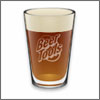flyangler18
Well-Known Member
I love me some Rodenbach Grand Cru, and I've been planning a Flanders Red for months and months while I was anxiously awaiting the re-release of the Roeselare blend from Wyeast. Well, I have two packets of this fabled blend in my fridge and I've been trying to formulate a recipe that uses JZ's recipe as a base with my own special touches and flourishes. I was thinking of doing the Raj Apte oak dowel method for micro-oxygenation, but reading some of Michael's postings recently have me thinking I could get the same character using oak cubes.
Not sure if I'm on the right track here, so I'm requesting the usual C/C for this recipe in process.
The name 'Dulle Griet' (Mad Meg) is a Flemish folklore figure who led a group of women to pillage Hell, and painted by Pieter Bruegel the Elder.

[SIZE=+2]Dulle Griet[/SIZE]
[SIZE=+1]17-B Flanders Red Ale[/SIZE]
Author: Jason Konopinski
Date: 4/15/09

Size: 6.0 gal
Efficiency: 80%
Attenuation: 90%
Calories: 176.01 kcal per 12.0 fl oz
Original Gravity: 1.054 (1.048 - 1.057)
|===================#============|
Terminal Gravity: 1.005 (1.002 - 1.012)
|=============#==================|
Color: 15.68 (10.0 - 16.0)
|=======================#========|
Alcohol: 6.39% (4.6% - 6.5%)
|=======================#========|
Bitterness: 15.6 (10.0 - 25.0)
|=============#==================|
[SIZE=+1]Ingredients:[/SIZE]
8.0 lb Vienna Malt
2 lb Munich Malt
1.0 lb White Wheat Malt
6 oz Belgian Caramunich
4.0 oz Belgian Aromatic
4.0 oz Belgian Special B
1 oz Willamette (5.0%) - added during boil, boiled 60 min
1.0 ea WYeast 3763 Roeselare
00:03:00 Dough-In - Liquor: 3.98 gal; Strike: 169.03 °F; Target: 156 °F
01:03:00 Saccharification Rest - Rest: 60 min; Final: 156.0 °F
02:03:00 Lautering - First Runnings: 0.0 gal sparge @ 154 °F, 10.0 min; Sparge #1: 2.54 gal sparge @ 180 °F, 10 min; Sparge #3: 2.54 gal sparge @ 180 °F, 10 min; Total Runoff: 7.87 gal
[SIZE=-1]Results generated by BeerTools Pro 1.5.2[/SIZE]
Not sure if I'm on the right track here, so I'm requesting the usual C/C for this recipe in process.
The name 'Dulle Griet' (Mad Meg) is a Flemish folklore figure who led a group of women to pillage Hell, and painted by Pieter Bruegel the Elder.

[SIZE=+2]Dulle Griet[/SIZE]
[SIZE=+1]17-B Flanders Red Ale[/SIZE]
Author: Jason Konopinski
Date: 4/15/09

Size: 6.0 gal
Efficiency: 80%
Attenuation: 90%
Calories: 176.01 kcal per 12.0 fl oz
Original Gravity: 1.054 (1.048 - 1.057)
|===================#============|
Terminal Gravity: 1.005 (1.002 - 1.012)
|=============#==================|
Color: 15.68 (10.0 - 16.0)
|=======================#========|
Alcohol: 6.39% (4.6% - 6.5%)
|=======================#========|
Bitterness: 15.6 (10.0 - 25.0)
|=============#==================|
[SIZE=+1]Ingredients:[/SIZE]
8.0 lb Vienna Malt
2 lb Munich Malt
1.0 lb White Wheat Malt
6 oz Belgian Caramunich
4.0 oz Belgian Aromatic
4.0 oz Belgian Special B
1 oz Willamette (5.0%) - added during boil, boiled 60 min
1.0 ea WYeast 3763 Roeselare
00:03:00 Dough-In - Liquor: 3.98 gal; Strike: 169.03 °F; Target: 156 °F
01:03:00 Saccharification Rest - Rest: 60 min; Final: 156.0 °F
02:03:00 Lautering - First Runnings: 0.0 gal sparge @ 154 °F, 10.0 min; Sparge #1: 2.54 gal sparge @ 180 °F, 10 min; Sparge #3: 2.54 gal sparge @ 180 °F, 10 min; Total Runoff: 7.87 gal
[SIZE=-1]Results generated by BeerTools Pro 1.5.2[/SIZE]















![Craft A Brew - Safale BE-256 Yeast - Fermentis - Belgian Ale Dry Yeast - For Belgian & Strong Ales - Ingredients for Home Brewing - Beer Making Supplies - [3 Pack]](https://m.media-amazon.com/images/I/51bcKEwQmWL._SL500_.jpg)










































